Embarking on the artful journey of hand appliqué necessitates thoughtful consideration of the thread used, as it plays a pivotal role in the success of the stitching endeavor.
The question of “What thread do you use for hand appliqué?” unveils a world of choices, each thread type holding unique qualities that impact the overall outcome.
From the delicate touch of silk threads to the reliable strength of cotton and polyester, the selection becomes an integral part of the creative process.
This exploration into the world of hand appliqué threads unveils the diverse array of options, providing insight into the nuances that contribute to achieving precision and elegance in every stitch.
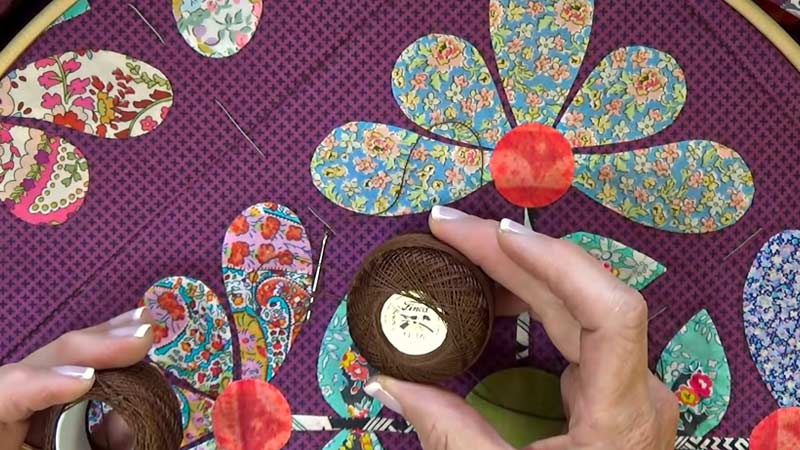
What Thread Do You Use For Hand Appliqué?
Delve into the art of hand appliqué with these seven simple methods, focusing on choosing thread to elevate your stitching experience. Selecting the right-hand applique thread is crucial for achieving precise and visually appealing results.
Explore these techniques to enhance your skills and create beautiful appliqué projects.
Fine Cotton Thread
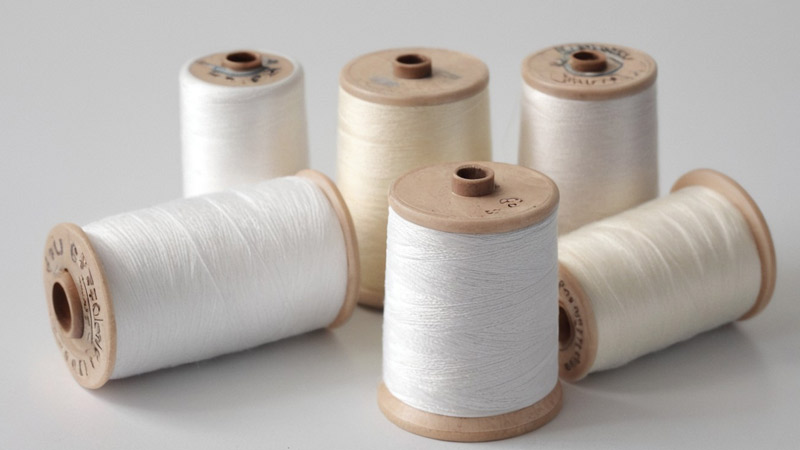
Opt for a fine cotton thread when working on delicate appliqué projects. This lightweight thread allows for seamless stitching, ensuring that the fabric edges lie flat and the stitches remain inconspicuous.
Invisible Thread
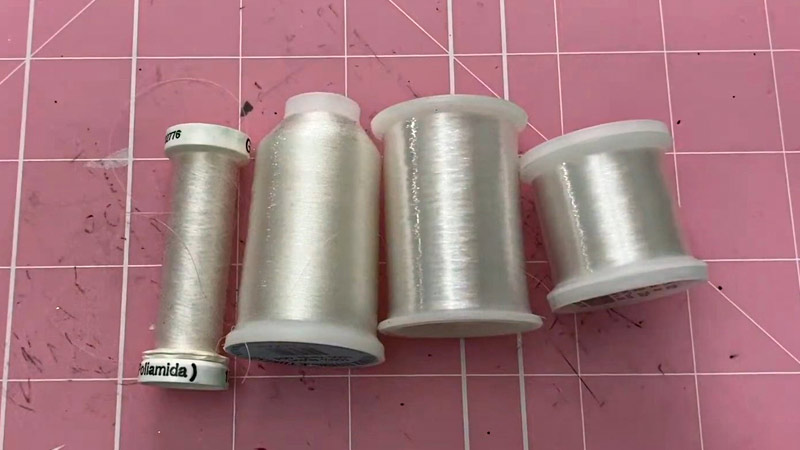
Use invisible thread for a nearly seamless finish. This clear, fine thread is ideal for appliqué projects where you want the stitches to be discreet, allowing the fabric to take center stage without visible thread lines.
50-Weight Cotton Thread
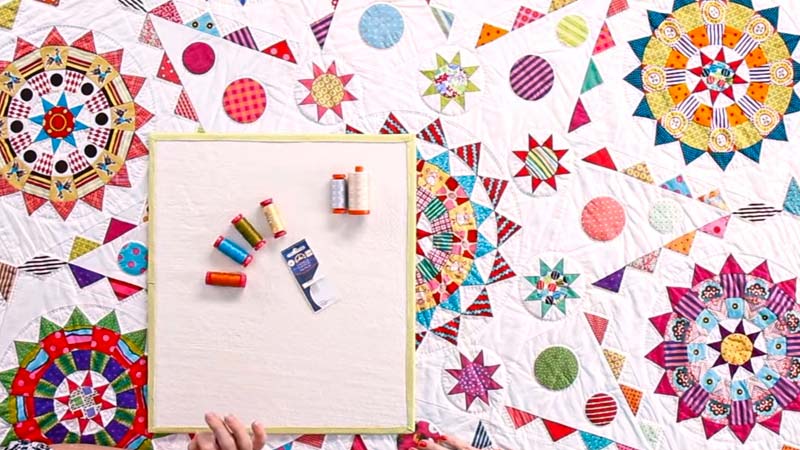
Select a 50-weight cotton thread for general-purpose hand appliqué. This medium-weight thread balances strength and fineness, providing durability while maintaining a delicate appearance on the fabric.
Silk Thread
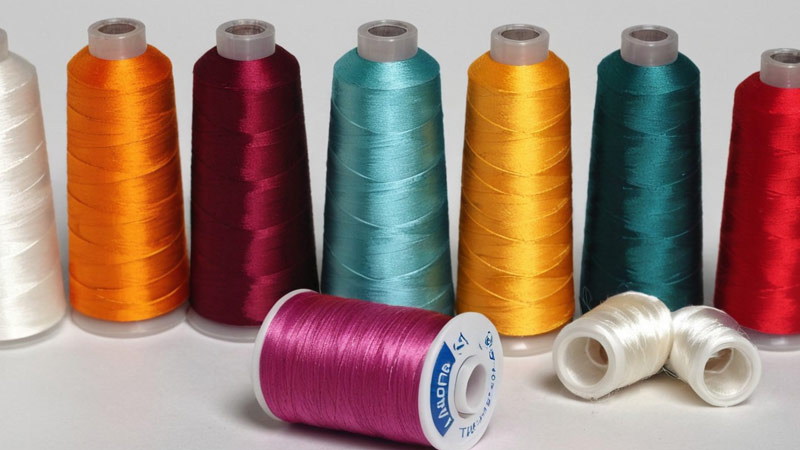
Embrace the luxurious feel of silk thread for high-end appliqué projects. Silk threads are smooth, adding a touch of elegance to your stitches, and they glide effortlessly through the fabric, making the hand appliqué process more enjoyable.
Polyester Thread
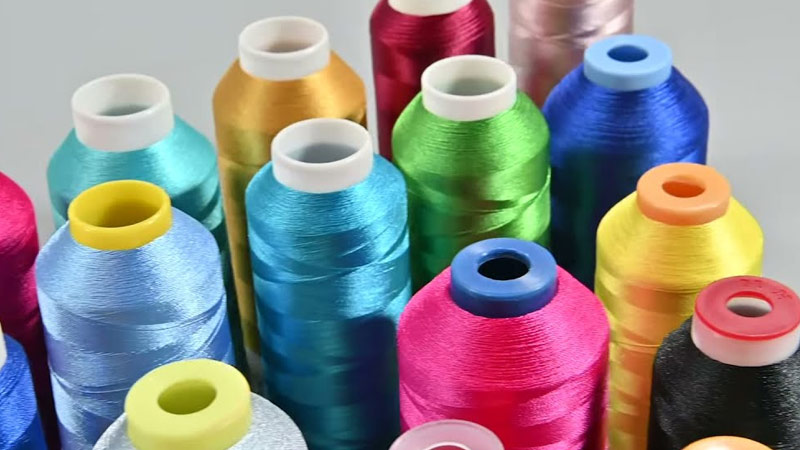
Consider polyester thread for its strength and colorfastness. Polyester threads offer durability, making them suitable for appliqué projects that may undergo frequent washing or exposure to sunlight.
Embroidery Floss
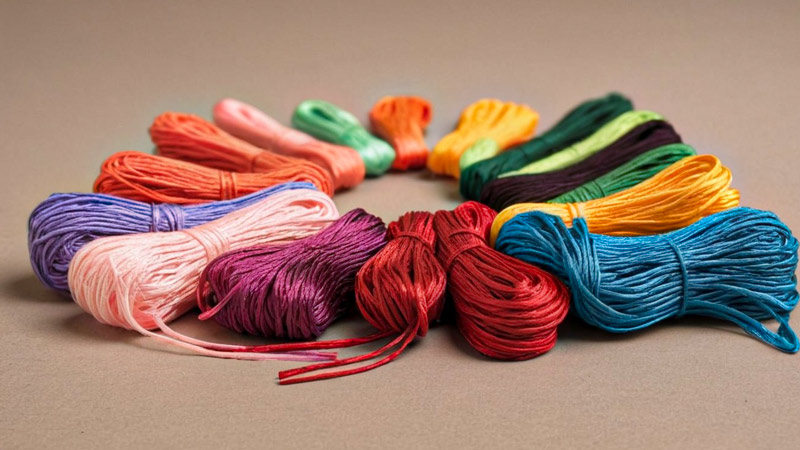
Explore the vibrant colors of embroidery floss for decorative appliqué. This six-strand thread allows you to mix and match colors, adding intricate details to your appliqué designs.
Monofilament Thread
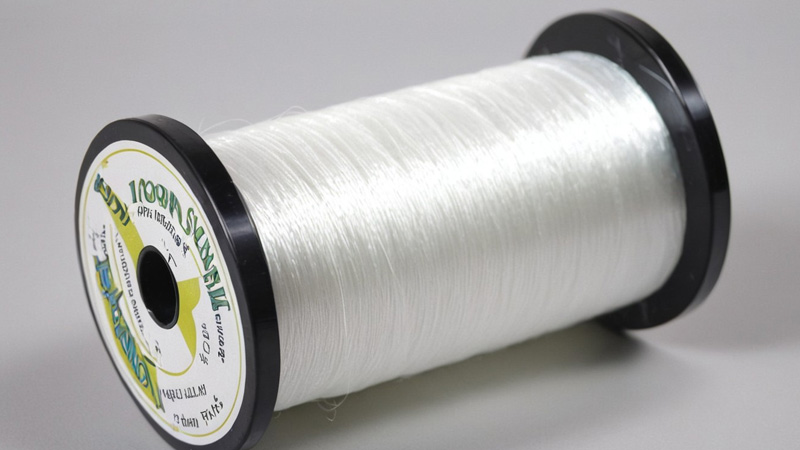
Experiment with monofilament thread, a single-strand, clear thread that virtually disappears on the fabric. This thread type is excellent for appliqué projects where you want the focus to be on the fabric itself.
Selecting the appropriate hand applique thread is an art in itself. These seven methods offer a spectrum of choices, allowing you to tailor your thread selection to the specific needs and aesthetics of your appliqué projects.
Best Thread For Hand Applique
Elevate your hand appliqué projects with the best threads carefully chosen for optimal results. Choosing the best thread for appliqué can significantly impact your stitches’ final appearance and durability.
Explore these seven top-notch threads, each offering unique qualities to enhance your appliqué experience.
Aurifil 50-Weight Cotton Thread
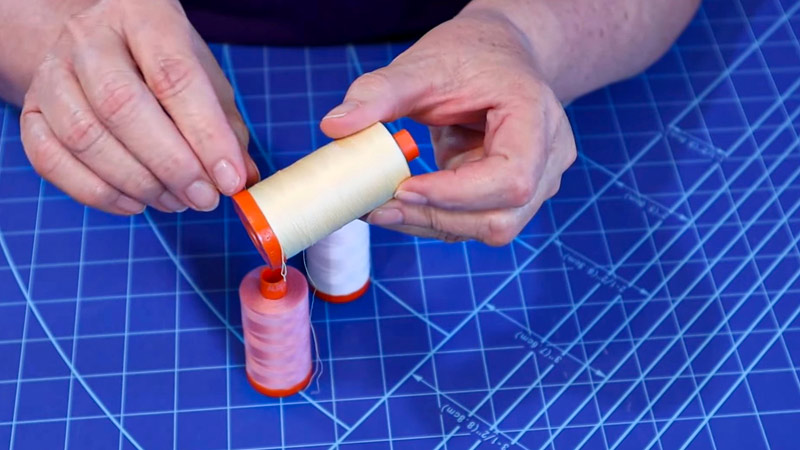
Renowned for its smoothness and strength, Aurifil’s 50-weight cotton thread is a top choice for hand appliqué. With a fine texture, it effortlessly glides through the fabric, creating neat and virtually invisible stitches.
Superior Threads Bottom Line Polyester Thread
The Superior Threads Bottom Line polyester thread is celebrated for its thinness and strength. Ideal for achieving inconspicuous stitches, this thread ensures a clean and polished look, making it one of the best choices for meticulous hand appliqué work.
YLI Silk Thread
Elevate your appliqué projects with the luxurious YLI Silk Thread. Known for its sheen and fine texture, this silk thread adds a touch of elegance to your stitches, making it a favorite among artisans for high-end appliqué designs.
Gütermann Cotton Thread
Gütermann Cotton Thread is a staple for hand appliqué, offering a blend of strength and fineness. A vast color range allows you to seamlessly match your thread to the fabric, ensuring a harmonious and professional finish.
WonderFil InvisaFil Invisible Thread
Achieve an impeccable finish with WonderFil InvisaFil, the go-to invisible thread for hand appliqué. This clear, fine thread virtually disappears on the fabric, allowing the focus to remain on the design without visible stitches.
Presencia Perle Cotton Thread
Celebrated for its versatility and bold colors, Presencia Perle Cotton Thread is a fantastic choice for decorative hand appliqué. The thick and lustrous thread adds texture and dimension to your stitches, making your appliqué stand out.
Coats & Clark Dual Duty XP All-Purpose Thread
Recognized for its durability and broad color selection, Coats & Clark Dual Duty XP All-Purpose Thread is a reliable choice for general hand appliqué projects. Its strength ensures longevity, making it suitable for various fabric types.
Choosing the best thread for appliqué is a nuanced decision that depends on the specific demands of your project.
These top seven threads cater to various preferences, allowing you to select the perfect thread to bring your hand appliqué visions to life.
How To Thread For Applique By Hand?
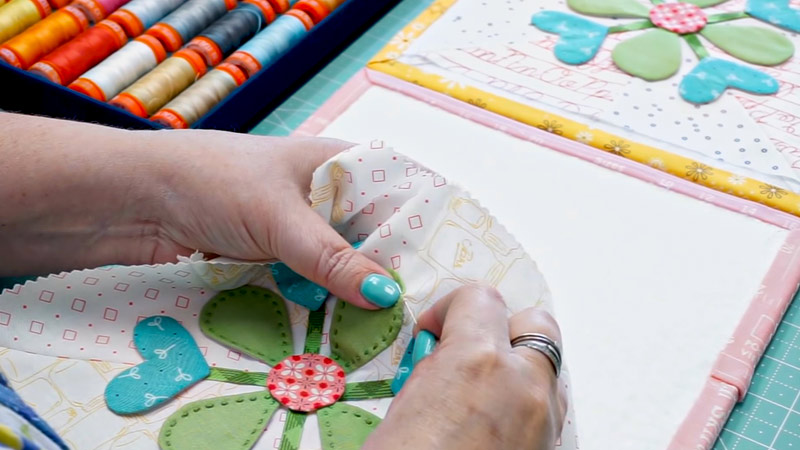
Discover the art of hand appliqué with these seven simple methods, focusing on the intricacies of threading for optimal results. The right appliqué thread is key to achieving seamless and elegant stitches.
Explore these techniques to enhance your hand appliqué skills, utilizing threads tailored to your specific needs.
Silk Thread for Hand Appliqué
Elevate your hand appliqué with the luxurious touch of silk thread. Known for its fine texture and sheen, silk thread glides smoothly through the fabric, making it an ideal choice for achieving delicate and refined stitches.
Appliqué Thread Weight Selection
Choose a thread weight suitable for your appliqué project. For lightweight fabrics, opt for finer threads like 50-weight cotton. For added durability and visibility, heavier fabrics may require a thicker thread, like 30-weight.
Needle and Thread Compatibility
Ensure compatibility between your needle and thread for efficient stitching. Select a needle size appropriate for the chosen thread for appliqué, considering the fabric thickness to avoid puckering or difficulty in piercing.
Thread Conditioning for Silk Thread
Condition silk thread beforehand and appliqué by lightly waxing it. This minimizes tangling, strengthens the thread, and provides additional control during stitching, enhancing the overall quality of your appliqué work.
Basting with Silk Thread
Use silk thread to bast appliqué pieces in place before stitching. Silk’s smooth texture facilitates easy removal of basting stitches, minimizing the risk of snagging delicate fabrics or leaving visible marks.
Blending Thread Colors
Seamlessly blend thread colors with your appliqué fabric to create invisible stitches. Matching the thread color to the appliqué piece ensures that stitches remain inconspicuous, resulting in a polished and professional finish.
Utilizing Felt Appliqué Embroidery Techniques
Explore felt appliqué embroidery with specialty threads. Felt often pairs well with thicker threads, enhancing the tactile and visual appeal of your appliqué. Experiment with contrasting or complementary colors to add dimension to your felt appliqué projects.
Threading for hand appliqué demands thoughtful consideration of fabric, needle, and the type of thread employed.
These seven methods provide a comprehensive guide, catering to various fabrics and styles, ensuring your hand appliqué projects are a testament to precision and craftsmanship.
FAQs
Is silk thread suitable for all hand appliqué projects?
Silk thread is a versatile choice for hand appliqué, particularly for delicate and luxurious projects. Its fine texture and sheen enhance the elegance of the stitches, offering smooth and inconspicuous results.
Can I use polyester thread for hand appliqué?
Yes, polyester thread is a viable option for hand appliqué. It is known for its durability and colorfastness, making it suitable for projects undergoing frequent washing or sunlight exposure.
How do I match thread colors to my appliqué fabric?
Achieving seamless stitches involves matching thread colors to the appliqué fabric. Blend thread colors by selecting hues that closely resemble the fabric, ensuring inconspicuous stitches for a polished finish.
Is there a specific thread weight recommended for hand appliqué?
The recommended thread weight for hand appliqué depends on the fabric weight and the desired level of visibility. Lightweight fabrics pair well with finer threads like 50-weight cotton, while thicker fabrics may benefit from a 30-weight thread.
What are the advantages of using specialty threads for hand appliqué?
Specialty threads, such as invisible threads or those designed for specific techniques like embroidery, offer unique advantages. They can provide inconspicuous stitches, added texture, or unique visual effects, allowing for creative expression in hand appliqué projects.
Conclusion
In the intricate realm of hand appliqué, the chosen thread becomes a silent yet influential partner in creating artistic marvels.
The answer to “What thread do you use for hand appliqué?” is a nuanced journey where texture, weight, and material considerations converge to shape the final masterpiece.
Whether opting for the luxurious feel of silk, the strength of cotton, or the invisibility of specialty threads, the chosen thread becomes a tactile extension of the artist’s vision.
As we conclude this exploration, we acknowledge the significance of thread selection in hand appliqué, recognizing it as a vital thread in the tapestry of artistic expression.
Leave a Reply